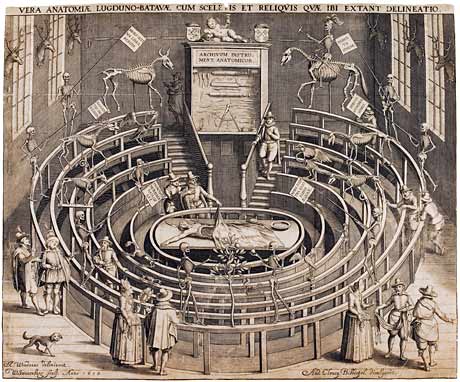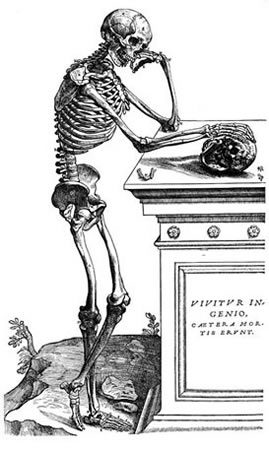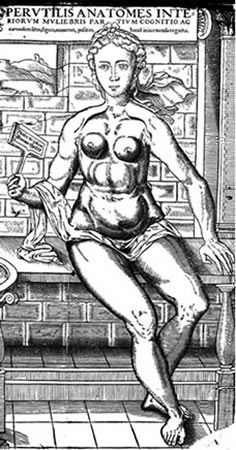Mauro Spicci
Antonio and the dangers of self-diagnosis
In the last few years the steadily growing number of attempts to read Shakespeare’s plays from a medical perspective has been justified by the idea that they are not simply the immortal fruits of a genius, but also documents reflecting the historical, cultural, and social background of Elizabethan England. Through the lens of medicine it has been possible to dig out several interesting topics, such as the imagery of bodily decomposition in Hamlet, the references to surgical anatomy in King Lear or the sinister ambiguity of digestive images underpinning Macbeth.1 The Merchant of Venice (ca. 1596-7) has also been a sort of natural playground for critics searching for evidence of the Bard’s medical skills. This essay suggests a new medical reading of this play by taking into account textual evidence that seems to have been neglected so far.
The Merchant of Venice begins with a sort of self-diagnosis made by Antonio, the protagonist of the play:
In sooth I know not why I am so sad,
It wearies me, you say it wearies you;
But how I caught it, found it, or came by it,
What stuff ’tis made of, whereof it is born,
I am to learn;
And such a want-wit sadness makes of me
That I have much ado to know myself.2
(I.1.1-6)
Antonio follows the typical diagnostic procedure of Renaissance medicine based on observing the effects of the illness. The analysis of his symptoms (“I am so sad”) leads Antonio first to investigate its causes and later to try and define its contaminating potential (“It wearies me, [. . .] it wearies you”). But in spite of its accuracy, Antonio’s self-diagnosis is ineffective: and the causes of his strange pathology, which is clear to the observer (as shown by Gratiano, who addresses Antonio with the words: “You look not well, Signor Antonio” I.1.73), remain obscure (“I am to learn”). Since observation turns to be of no use, Antonio needs to find different tools to interpret what makes it so difficult for him to know himself. Antonio’s illness makes him a stranger to himself: its indecipherability, its unfathomable mystery transform the merchant’s sick body into a strange and terrifying alien entity.
The human body: A strange entity
The theme of man’s “strangeness” to his own body was typical of many Elizabethan texts that draw inspiration from anatomy. Between the 16th and the 17th centuries, prompted by the rapid circulation of Vesalius’ De Humani Corporis Fabrica (1543), anatomical studies flourished throughout Europe. Renaissance anatomy refused the theoretical bodily paradigm of the ancients by claiming the primary role of direct observation. Through dissection, Renaissance anatomists violated the taboo of bodily impenetrability and disclosed to the observer a new body, whose unexpected sensory horizons greatly influenced the arts and literature of the age. This is particularly evident in Britain, where anatomy, long excluded from the medical curriculum, entered into a fruitful alliance with many non-medical genres, as shown by the many philosophical or literary anatomies published in Britain in the 16th and 17th centuries. In these texts early modern anatomy was matched with moralistic reflection and with the morality plays of the Middle Ages, so that the hybridization of heterogeneous literary and dramatic genres produced unexpected motives and literary topoi.3
Most striking among these is the theme of corporeal “strangeness,” as shown by the lines taken from The Purple Island (1633), an allegorical poem whose author, Phineas Fletcher, describes the anatomical body as
A place too seldome view’d, yet still in view;
Neare as our selves, yet farthest from our care;
Which we by leaving find, by seeking lost;
A forrain home, a strange, though native coast;
Most obvious to all, yet most unknown to most.4
(I.34.2-7)
Fletcher’s lines clearly represent the anatomical body as a mysterious entity (“strange”), an alien (“forrain”), yet familiar (“native”) land. This sense of bodily “strangeness,” as in the opening lines of The Merchant of Venice, can also be perceived in Solanio’s lines
Now by the two-headed Janus
Nature hath framed strange fellows in her time.
(I.1.50-51)
What Solanio seems to imply by the adjective “strange” is the idea that in 16th-century England the body is surrounded by a halo of mystery and indecipherability. In other words, the modern body, especially when invaded by an illness, heightens man’s sense of “strangeness” towards his own body and is a very difficult entity to define.
Know thyself: Anatomical mottoes and surgical ghosts

The Elizabethan Age inherited the theme of bodily mortality from the medieval traditions of the danse macabre and the De Brevitatae Vitae. These provided the Elizabethans with symbols and images (such as the skull or the wheel of fortune) and also with an effective motto, the Memento Mori (Remember You Shall Die). When the Scientific Revolution took place in Europe, the Memento Mori naturally joined the realm of anatomy and was often reproduced on the frontispieces and in the copperplates of Renaissance anatomical manuals, or in the coeval anatomical theatres. The Memento Mori was, for instance, one of the mottoes sustained by the skeletons in an engraving showing the anatomical theatre of the University of Leyden (Fig. 1), one of the epicenters of the anatomical revolution of the Renaissance. Also the vanitas theme (Fig. 2)—i.e. the fallacy of all earthly things—crept into many of the anatomical woodcuts of Vesalius’ De Humani Corporis Fabrica (1543), in which the author explicitly claimed that medicine must rely on direct observation of the human body rather than on the authority of ancient texts. The fact that the Memento Mori appeared so often in the anatomical texts of the Renaissance suggests that since its early modern origins anatomy had been a revolutionary method to read the human body, providing men with deeper knowledge about their own organic and mortal condition.
In the anatomical manuals of the early modern age, the Memento Mori frequently went hand in hand with the Delphic motto Nosce Te Ipsum (“Know Yourself”), as found for instance in some anatomical illustrations published in London in 1559 (Fig. 3). The Nosce Te Ipsum motif gave medicine a strong universal value: the anatomy of the corpse unfolds the structure of one single body, but also of the body of all humanity. By penetrating the bodily fabric, the anatomist realized that the body under dissection has the same mortal nature (Memento Mori) as his own (Nosce Te Ipsum).


Antonio’s anxiety is typical of the anatomical revolution of the Renaissance, reflecting the transition from the bodily model of antiquity, founded on written texts, to that of modernity, based on manipulating the flesh. So when Antonio expresses the need for some form of deeper inquiry into his own body, he makes use of one of the most typical among Renaissance anatomical mottoes: “Know Thyself,” which Antonio—as a sort of self-curing doctor—aptly modifies into “Know Myself.” Thanks to the use of this anatomical motto, Antonio’s body acquires the same function as the so-called “flayed men” of Renaissance anatomical manuals: to show the secrets of the human body so that its mysteries can be observed and known.
The “surgical” solution evoked by Antonio through the use of the “Know Myself” motif soon makes itself manifest through Shylock. From his first lines, the moneylender shows his capacity for manipulating not only money, but also blood and bodily tissues. When Bassanio, Antonio’s friend, asks Shylock to lend him the money, Shylock asks Antonio to give him as a guaranty for the loan
[. . .] an equal pound
Of your fair flesh, to be cut off and taken
In what part of your body pleaseth me.
(I.3.146-9)
In the economic universe of Venice, where everything is given a fixed price, the human body is an object that can be manipulated like a material possession. Already in this period many European political and religious institutions started to take severe legal measures to regulate the circulation of corpses for anatomy, by establishing their exact number, their provenance, and their destination. In a world in which the manipulation and circulation of the body for didactic purposes started to acquire the status of an economically organized practice, Shylock’s request for a pound of flesh appears far less surprising. Antonio accepts Shylock’s condition with the realistic prospect of a promising business deal. But the sea is treacherous. So when Antonio’s fleet is shipwrecked, the surgical solution Antonio hinted at with his “know myself” bursts violently onto the stage and keeps the audience on edge.
But what is the reason for Shylock’s obstinacy in demanding Antonio’s “pound of flesh”? What does he intend to demonstrate by anatomically violating Antonio’s body? As suggested before, one of the reasons for the great popularity of Renaissance anatomy lies in its didactic and universal quality. This is what Morocco refers to when he invites Portia to make a surgical incision in his own body with the words:
Let us make incision for your love
To prove whose blood is reddest
(II.1.6-7)
Both Morocco’s and Shylock’s bodies are manifestly “strange”: thus in the play, the appeal for an “anatomical” inquiry into the human body comes from two characters whose “strange” corporeality strongly destabilizes the Western system of bodily classification. Not only does Shylock’s explicit reference to anatomy provide Antonio with a proper surgical solution for his curiosity about the mystery of his own body; it also offers a perspective founded on the universal bodily model verified by Renaissance anatomical studies. Shylock’s well known monologue tunes in to this critical hypothesis:
[. . .] I am a Jew. Hath
Not a Jew eyes? Hath not a Jew hands, organs,
Dimensions, senses, affections, passions? Fed with the
Same food, hurt with the same weapons, subject to
The same diseases, healed by the same means, warmed
And cooled by the same winter and summer as a
Christian is? If you prick us, do we not bleed? If you
Tickle us, do we not laugh? If you poison us, do we
Not die? And if you wrong us, shall we not revenge?
If we are like you in the rest, we will resemble you in that.
(III.1.55-65)
Shylock’s lines confirm an equality founded on the new knowledge of Renaissance medicine: thanks to its organic structure (made of “eyes,” “organs,” and “dimensions”), its perfect functioning (regulated by the rhythm of “affections” and “passions”), and its mortal nature (as suggested by the term “diseases”), the human body becomes the basis for understanding that bodily suffering is common to every human being, expressed in a universal language made of sensations and physical processes highlighted by early modern anatomy.
The fact that the anatomical ghost evoked by Antonio and made concrete by Shylock is exorcised in the trial scene by a linguistic (yet dramatically effective) quibble does not invalidate the purport of the anatomical imagery we have traced in the play. The corporeal universality Shylock hints at is a natural consequence of the Scientific Revolution of the 16th and 17th centuries: this is because it is in the Renaissance that the study of the human body replaces the written text as the new source of knowledge, which the theatre—etymologically “a place for seeing”—contributes to make visible and truly universal.
Notes
- For the analysis of the theme of digestion in Macbeth see: Mauro Spicci, “The Body as Metaphor: Digestive Bodies and Political Surgery in Shakespeare’s Macbeth”, Medical Humanities 33 (2007): 67-69.
- All the quotations are taken from: William Shakespeare, The Merchant of Venice, ed. John Russell Brown (The Arden Shakespeare, 1955).
- Further information on the role of literary anatomy in the Renaissance can be found in: Mauro Spicci, Corpo e ibridazioni discorsive nell’Inghilterra elisabettiana. The Purple Island (1633) di Phineas Fletcher (Catania: Ed.It, 2009).
- Phineas Fletcher, The Purple Island, online edition, 2003, University of Oregon. The complete text of Fletcher’s work is available at the link: http://www.luminarium.org/renascence-editions/island/
MAURO SPICCI received his PhD in English Studies in January 2008. From 2004 to 2008 he worked as Assistant Professor in History of British Drama at the Università degli Studi di Milano (Italy), where he also worked as lecturer in translation studies at the faculty of Political Science and as lecturer in English culture at the faculty of Mediazione Linguistica e Culturale. He took part as a speaker in several national and international conferences. He has published many articles on body metaphors in Shakespeare’s plays, the relations between medicine, drama and literature in early modern England, the link between medical anatomy and Elizabethan allegorical poetry, bodily fragmentation in contemporary drama, and the iconography of Shakespearean characters/actors. His monograph entitled Corpo e ibridazioni discorsive nell’Inghilterra elisabettiana. The Purple Island (1633) di Phineas Fletcher has just been published by Ed.It (Catania, Italy).
Highlighted in Frontispiece Volume 1, Issue 4 – Summer 2009

Leave a Reply